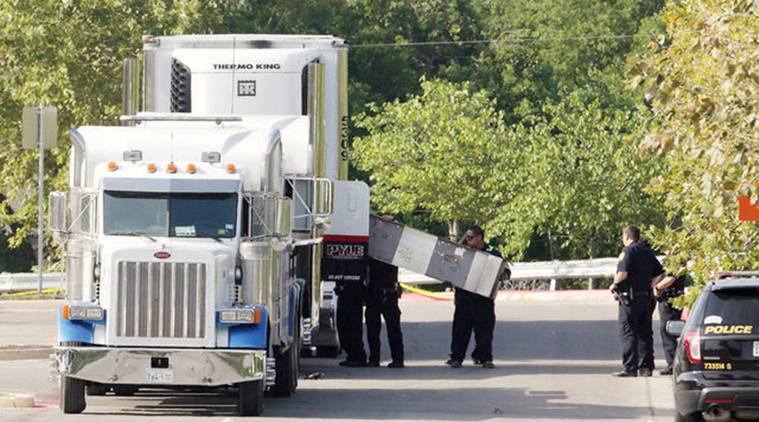The Supreme Court struck down less than 1% of the federal laws passed over a 50-year period.
*** Questions must be asked why is the Justice Department re-applying this program and to what end?
Criminal forfeiture is an action brought as a part of the criminal prosecution of a defendant. It is an in personam (against the person) action and requires that the government indict (charge) the property used or derived from the crime along with the defendant. If the jury finds the property forfeitable, the court issues an order of forfeiture.
For forfeitures pursuant to the Controlled Substances Act (CSA), Racketeer Influenced and Corrupt Organizations (RICO), as well as money laundering and obscenity statutes, there is an ancillary hearing for third parties to assert their interest in the property. Once the interests of third parties are addressed, the court issues a final forfeiture order.
Civil judicial forfeiture is an in rem (against the property) action brought in court against the property. The property is the defendant and no criminal charge against the owner is necessary.
Administrative forfeiture is an in rem action that permits the federal seizing agency to forfeit the property without judicial involvement. The authority for a seizing agency to start an administrative forfeiture action is found in the Tariff Act of 1930, 19 U.S.C. § 1607. Property that can be administratively forfeited is: merchandise the importation of which is prohibited; a conveyance used to import, transport, or store a controlled substance; a monetary instrument; or other property that does not exceed $500,000 in value.
Source: A Guide to Equitable Sharing of Federally Forfeited Property for State and Local Law Enforcement Agencies, U.S. Department of Justice, March 1994.
Participants And Roles
The Justice Asset Forfeiture Program includes activity by DOJ components and several components outside the Department. Each component plays an important role in the Program.
Department of Justice Components
Money Laundering and Asset Recovery Section (MLARS) of the Criminal Division holds the responsibility of coordination, direction, and general oversight of the Program. AFMLS handles civil and criminal litigation, provides legal support to the U.S. Attorneys’ Offices, establishes policy and procedure, coordinates multi-district asset seizures, administers equitable sharing of assets, acts on petitions for remission, coordinates international forfeiture and sharing and develops training seminars for all levels of government.
Bureau of Alcohol, Tobacco, Firearms and Explosives (ATF) enforces the federal laws and regulations relating to alcohol, tobacco, firearms, explosives and arson by working directly and in cooperation with other federal, state and local law enforcement agencies. ATF has the authority to seize and forfeit firearms, ammunition, explosives, alcohol, tobacco, currency, conveyances and certain real property involved in violation of law.
Drug Enforcement Administration (DEA) implements major investigative strategies against drug networks and cartels. Enforcement operations have resulted in significant seizure and forfeiture activity. A significant portion of DEA cases are adopted from state and local law enforcement agencies.
Federal Bureau of Investigation The FBI investigates a broad range of criminal violations, integrating the use of asset forfeiture into its overall strategy to eliminate targeted criminal enterprises. The FBI has successfully used asset forfeiture in White Collar Crime, Organized Crime, Drug, Violent Crime and Terrorism investigations. See the FBI Investigative Programs Asset Forfeiture Home Page for more information.
United States Marshals Service as the primary custodian of seized property for the Program. USMS manages and disposes of the majority of the property seized for forfeiture. See their Seized Asset Information page and their National Sellers List for more information.
United States Attorneys’ Offices (USAOs) are responsible for the prosecution of both criminal and civil actions against property used or acquired during illegal activity.
Asset Forfeiture Management Staff (AFMS): Has responsibility for management of the Assets Forfeiture Fund, the Consolidated Asset Tracking System (CATS), program-wide contracts, oversight of program internal controls and property management, interpretation of the Assets Forfeiture Fund statute, approval of unusual Fund uses, and legislative liaison on matters affecting the financial integrity of the Program.
Components Outside the Department of Justice
There are several organizations outside the Department of Justice who participate in the DOJ Asset Forfeiture Program. This list may change as additional agencies and offices become part of the DOJ program. These agencies participate in Judicial forfeitures only.
United States Postal Inspection Service (USPIS) makes seizures under their authority to discourage profit-motivated crimes such as mail fraud, money laundering and drug trafficking using the mail.
Food and Drug Administration FDA’s Office of Criminal Investigations has made seizures involving health care fraud schemes, counterfeit pharmaceuticals, illegal distribution of adulterated foods, and product tampering.
United States Department of Agriculture, Office of the Inspector General USDA’s Office of Inspector General’s (OIG) mission is to promote effectiveness and integrity in the delivery of USDA agricultural programs. Forfeiture is integrated as an important law enforcement tool in combating criminal activity affecting USDA programs.
Department of State, Bureau of Diplomatic Security The Bureau of Diplomatic Security investigates passport and visa fraud and integrates asset forfeiture into our strategy to target the profits made by vendors who provide fraudulent documentation or others who utilize fraudulent visas and/or passports to further their criminal enterprises.
Defense Criminal Investigative Service (DCIS) is the criminal investigative arm of the Inspector General of the Department of Defense. The mission of DCIS is to protect America’s War fighters by conducting investigations and forfeitures in support of crucial National Defense priorities that include homeland security/terrorism, product substitution, contract fraud, public corruption, computer crimes, and illegal technology transfers. ”
The Comprehensive Crime Control Act of 1984 established the Department of Justice Assets Forfeiture Fund to receive the proceeds of forfeiture and to pay the costs associated with such forfeitures, including the costs of managing and disposing of property, satisfying valid liens, mortgages, and other innocent owner claims, and costs associated with accomplishing the legal forfeiture of the property.
The Attorney General is authorized to use the Assets Forfeiture Fund to pay any necessary expenses associated with forfeiture operations such as property seizure, detention, management, forfeiture, and disposal. The Fund may also be used to finance certain general investigative expenses. These authorized uses are enumerated in 28 U.S.C. §524(c). Read more here.




 Texas Public Radio
Texas Public Radio

